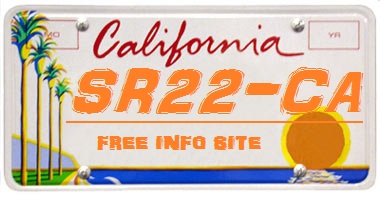February 23, 2013
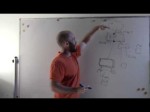
Info Level: Beginner Presenter: Eli the Computer Guy Date Created: February 15, 2013 Length of Class: 17:05 Tracks Networking Classes that Require a Computer Lab Prerequisites Setting Up Port Forwarding TCP/IP and Subnet Masking Understanding SOHO Routers Understanding Switches Introduction to Networking Physical Network Segmentation Purpose of Class This class teaches students why they should set up a separate Computer Lab network on their home network if they will be creating test servers and networks. It also explains the basic concepts such as; Port Forwarding to Multiple Layers of Routers, the Need for Different IP Subnets on the Same LAN, and that Conflicting Server Services can cause odd problems. Class Notes Reasons for a Separate Computer Lab Network– DNS and DHCP issues, performance problems Lab Network must be on a different IP Network then other LAN Networks. 192.168.1.x, 192.168.2.x, 192.168.3.x For access to servers form outside world port forwarding on your ISP Router must be pointed at the Router for your Lab Network Any $60 Linksys Router can be used to create a lab network. Lab Network Router External Interface needs to be configured to be on the same network as the ISP Router’s Internal Interfaces.
Tags: class, class-notes, diy, fix, forwarding, multiple-layers, network, network-router, networking, prerequisites, router, science & technology, server-services, understanding
Posted in Software Functioning Abnormally | No Comments »
February 5, 2013

Info Level: Beginner Presenter: Eli the Computer Guy Date Created: March 24, 2010 Length of Class: 42 Minutes Tracks Servers Prerequisites None Purpose of Class This class explains the basics of licensing for servers and the common pitfalls that are run into Topics Covered Open Source Server Licenses Access Licenses Overview of Microsoft Licensing The Problems with Piracy Class Notes Open Source Open Source does not mean free!!! Free Speech vs. Free Beer Service Contracts may be required Non commercial use may be free Types of Server Per server — Per Physical Server, or Virtual instance of a Server Per socket — Per CPU in Server Per core — Per Total Number of Cores in Server. Access Licenses Microsoft refers to Access Licenses as CAL’s Seat — Per device that will connect to the server Session — Per concurrent connection to the server User — per user account on the server Microsoft Licenses OEM — Cheapest, but only good for 1 computer Retail — Very expensive, but can be used for life Volume — Best bet for companies with 10 or more employees. Allows for ghosting of computers Pirating Just don’t do it If they are too cheap to use legitimate software they’re probably too cheap to pay you. Final Thoughts For Volume Licensing always call CDW. They will give you a free quote so you make sure you’re buying the right licenses. Resources My Account Rep at CDW is Lauren Booth at 877-741-4552 . She’ll treat you well. Just tell her Eli the Computer Guy sent you.
Tags: class, final-thoughts, functioning abnormally, licenses, licenses-access, licenses-as-cal, minutes-tracks, physical-server, retail, server-access, source, speech, thoughts, topics-covered, virtual
Posted in Software Functioning Abnormally | No Comments »
December 23, 2012
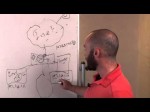
Info Level: Beginner Presenter: Eli the Computer Guy Date Created: July 13, 2010 Length of Class: 52 Minutes Tracks Networking Prerequisites Introduction to Networking Purpose of Class This class discusses the uses and functionality of SOHO routers. Topics Covered Types of Routers External IP Addresses DHCP Server Port Forwarding Firewalls Port Triggering Examples of Multiple Router Configurations Class Notes SOHO Routers are better than residential routers, and easier to use then Enterprise routers Always buy a static IP address if servers on the LAN will provide services to the Internet DHCP is provided by most SOHO routers. Create a DHCP scope that does not include the static IP addresses used by other servers on the network. The DHCP server on a SOHO router can trigger other DHCP servers to turn off Port Forwarding allows you to forward specific types on Internet traffic to specific servers on the LAN Firewalls block ports which can prevent hacking, but can also cause problems for legitimate users
Tags: addresses-used, class, configurations, enterprise, firewalls-port, networking, server-port, turn-off-port
Posted in Software Functioning Abnormally | No Comments »
October 29, 2012
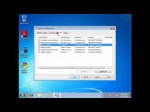
Info Level: Beginner Presenter: Eli the Computer Guy Date Created: May 17, 2010 Length of Class: 62 Minutes Tracks Computer Repair Prerequisites Familiarity with the Windows Operating System Purpose of Class This class teaches students how to use the tools built into the Windows operating system to troubleshoot and fix common issues Topics Covered Safe Mode and System Restore Task Manager Hard Drive Maintenance Startup Services Computer Management Console Class Notes Introduction The tools built into Windows are invaluable for troubleshooting problems and are free. Safe Mode and System Restore System Restore can revert the configuration of a computer to a previous Restore Point. Restore Points are created automatically System Restore changes programs, but not documents/videos etc. Safe Mode boots the computer with the least number of services possible. This allows you to basic work such as editing and deleting files. To enter Safe Mode press the “F8” key continuously as the computer boots up. Task Manager To find amount of RAM in Computer and the Processor type RIGHT Click “My Computer” and select PROPERTIES To Access Task Manager RIGHT Click the Task Bar at the bottom of the screen, and then select TASK MANAGER Applications Tab shows you what applications are open and allows you to kill them Processes Tab shows you all individual Processes and how many resources they are using. You can kill process from here. Performance Tab shows how much of the CPU and RAM are being …
Tags: class, configuration, console-class, laptops-may, manager, processor, science & technology, solutions, system-restore, the-solutions, tools, windows
Posted in Software Functioning Abnormally | No Comments »
July 20, 2012

The IT – Network Communications Specialist program prepares students to maintain and support local and wide area networks, computer communications systems including router and switch configurations, hardware & software infrastructure management/design, voice and video over IP, private telephone systems (PBX), voicemail systems, and video production. Potential students should enjoy hands-on activities, working with people, and problem solving activities. Prior computer experience is beneficial, but not required. Network Communication Specialists are needed in almost any business using local and/or wide area networks, the Internet or Intranets, and telephony systems. To request more information about Southwest Tech or the IT-Network Communication Specialist program, click here: www.swtc.edu
Tags: alyona-show, area-networks, bullying in schools, class, college, communication, information technology, internet, kasparian, programmer, school, students-should, tri-states, university
Posted in Internet Network Problem | No Comments »
June 13, 2012

A+ Computer Repair Course Chapter 1 part 1. Learning objectives: 1. You will learn hardware needs software to work. 2. You will learn to identify hardware components.
Tags: certification, chapter, class, course-chapter, education, hardware-needs, rop, school, training, tutorial, will-learn, windows
Posted in Software Functioning Abnormally | No Comments »
April 25, 2012
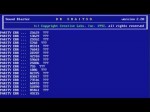
Dr. Sbaitso is a text program made by Creative Labs which it comes the Creative Sound Blaster Pro card. This program was released in Early 1992 around the time when Windows 3.1 came out in fact this the DOS version of Dr. Sbatiso and there is a Windows version which is made for Windows 9x that includes Proddy Parrot. He is fun to mess around,swear, and cheat with. This is a computer program and the first text to speech program. In the video I was fooling around with him don’t swear or curse so much you’ll get the parity error. I used DosBox to use this program. Dr. Sbaitso is supposed to be psychiatrist help you with your problems.
Tags: 386, 90's, audio, class, creative, creative-sound, labs, parity, parrot, proddy, sound, time, version-which, video
Posted in Software Functioning Abnormally | No Comments »
January 16, 2012

Info Level: Beginner Presenter: Eli the Computer Guy Date Created: January 14, 2012 Length of Class: 73 Minutes Tracks Computer Repair Prerequisites None Purpose of Class This class teaches the procedures and thought process behind trying to clean a Windows PC that has been infected with viruses. Chapters Introduction (00:00) First Steps (00:00) Uninstalling Crapware (00:00) Installing Security Software (00:00) Install ALL Updates (00:00) Run Scans (00:00) Final Thoughts (00:00) Class Notes Introduction Generally is a PC has a virus you should just do a Wipe and Reload Create a checklist for the procedures you will use to clean the PC Know when you will decide the computer is not repairable You can run the computer in Safe Mode is regular mode is not responsive. You access Safe Mode by pressing F8 while the PC boots, and then selecting “Safe Mode” option. MSCONFIG tool can be used to keep software from booting when the computer boots. To use MSCONFIG go to Start – Run – and then type MSCONFIG First Steps Try to do a System Restore to an earlier time before the computer had the virus with Windows built in System Restore Utility Use OpenDNS on your router to try to prevent the infected computer from “phoning home” Change the password on the system to prevent scripts from being able to easily modify configurations Reset Internet Explorer Settings to default to ensure that Internet Explorer will not block your attempts to download updates and software. Uninstall Crapware …
Tags: class, computer virus, first-steps, introduction, system-restore, tutorial, utility, virus, windows
Posted in Software Functioning Abnormally | No Comments »
January 12, 2012

Class Notes and More can be found at: www.everymanit.com Info Level: Beginner Presenter: Eli the Computer Guy Date Created: January 11, 2012 Length of Class: 33 Minutes Tracks Computer Repair Prerequisites None Purpose of Class This class teaches students how to easily Tune Up a Windows PC. We clean Temporary Files, Defragment the Registry, Disable Start up Items, and Uninstall Unused Software. Chapters Introduction (00:00) Overview (01:50) Demonstration (14:26) Final Thoughts (29:34) Class Notes Introduction Windows PC’s slow down over time due to normal use. Windows does not have effective ways to clean up the PC built in. You use specific software to perform Tune Ups of Windows PC’s. Eli prefers CCleaner, but there are a number of options. The main functions you need are the ability to Clean Up or Defragment the Registry, be able to Disable Start Up Items, and to be able to Clean Up Temp Files. Overview CCleaner is currently FREE to use Windows creates temporary files while you are using the computer. These files can the cause problems. Many people have 5-10GB of temp data on their PC’s. (I have seen one client with 50+GB). PC’s need 10% of their hard drive space to be free in order to do standard routines. If the hard drive space goes below 1 GB of Free Space the PC can start to experience major problems. Anti Virus and Anti Malware software will scan ALL files on a PC. You can waste significant time if the software is scanning Temp Files. The Registry is a Database …
Tags: ccleaner, class, class-notes, database, demonstration, disable-start, files-overview, registry, registry defragment, temporary-files
Posted in Software Functioning Abnormally | No Comments »
September 20, 2011

Info: Level: Beginner Presenter: Eli the Computer Guy Length: 30 Minutes Tracks: Security / Data Integrity Prerequisites: None Purpose of Class: This class introduces you to the basic concepts of computer security. Topics Covered: Defining Hackers Updating Software Antivirus Software Antimalware Software Firewalls Site Advisors Internet Security Suites Web Browser Security Problems Class Notes: Defining Hacker There are many reasons why people hack. Some do it for fun, profit or to prove a point. Hacking is simple enough that a 9 year old can do it. Software Flaws / Updates Are the prime reasons computers are compromised Anti Virus Protects against viruses A virus is self replicating and tries to damage a computer Anti Malware Malware is software that’s primary purpose is not to damage a computer Malware generally tries to collect information about a user, or tries to force a user to visit sites or buy products. Firewall Hardware firewalls are built into routers Software firewalls are installed onto your computer “Security” Suites Security Suites can be worse than hackers — We have met the enemy and he is us. Permissions If you use an account other than ADMINISTRATOR or ROOT when you normally use your computer you will be more secure. Site Advisors Warn you if you are going to an “unsafe” site Web Browsers The Problem with Internet Explorer is that is does more than just browse the Internet. Firefox and Chrome are better but still have problems
Tags: advisors-warn, antivirus, basics, browser, class, minutes-tracks, science & technology, security, software problems, suites-security, virus, virus-protects, your-computer
Posted in Software Functioning Abnormally | No Comments »


